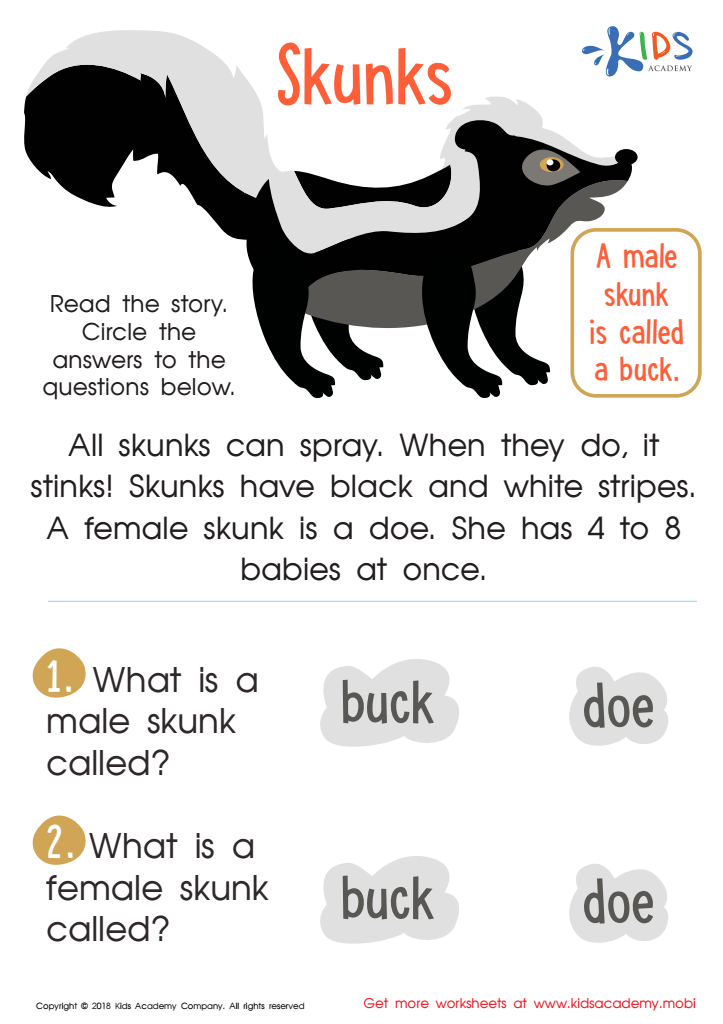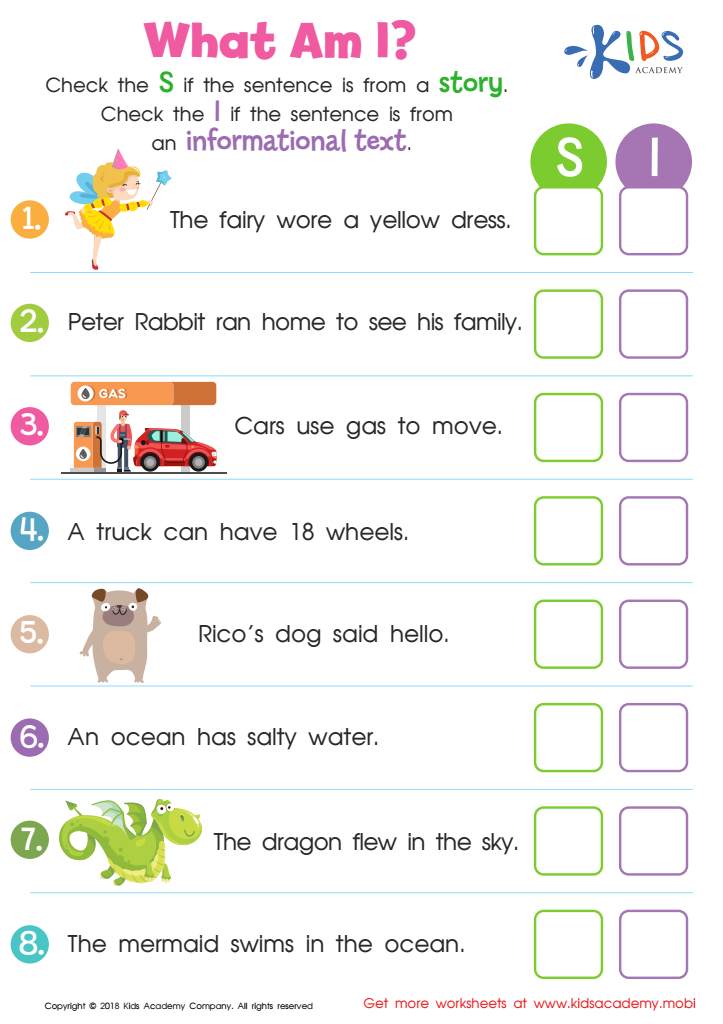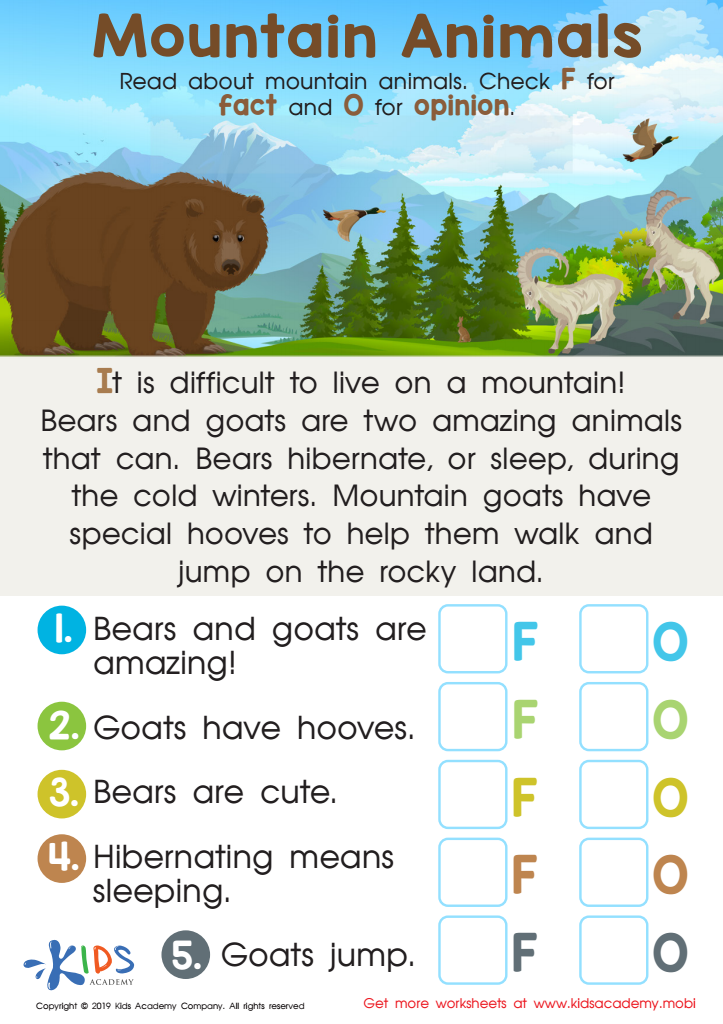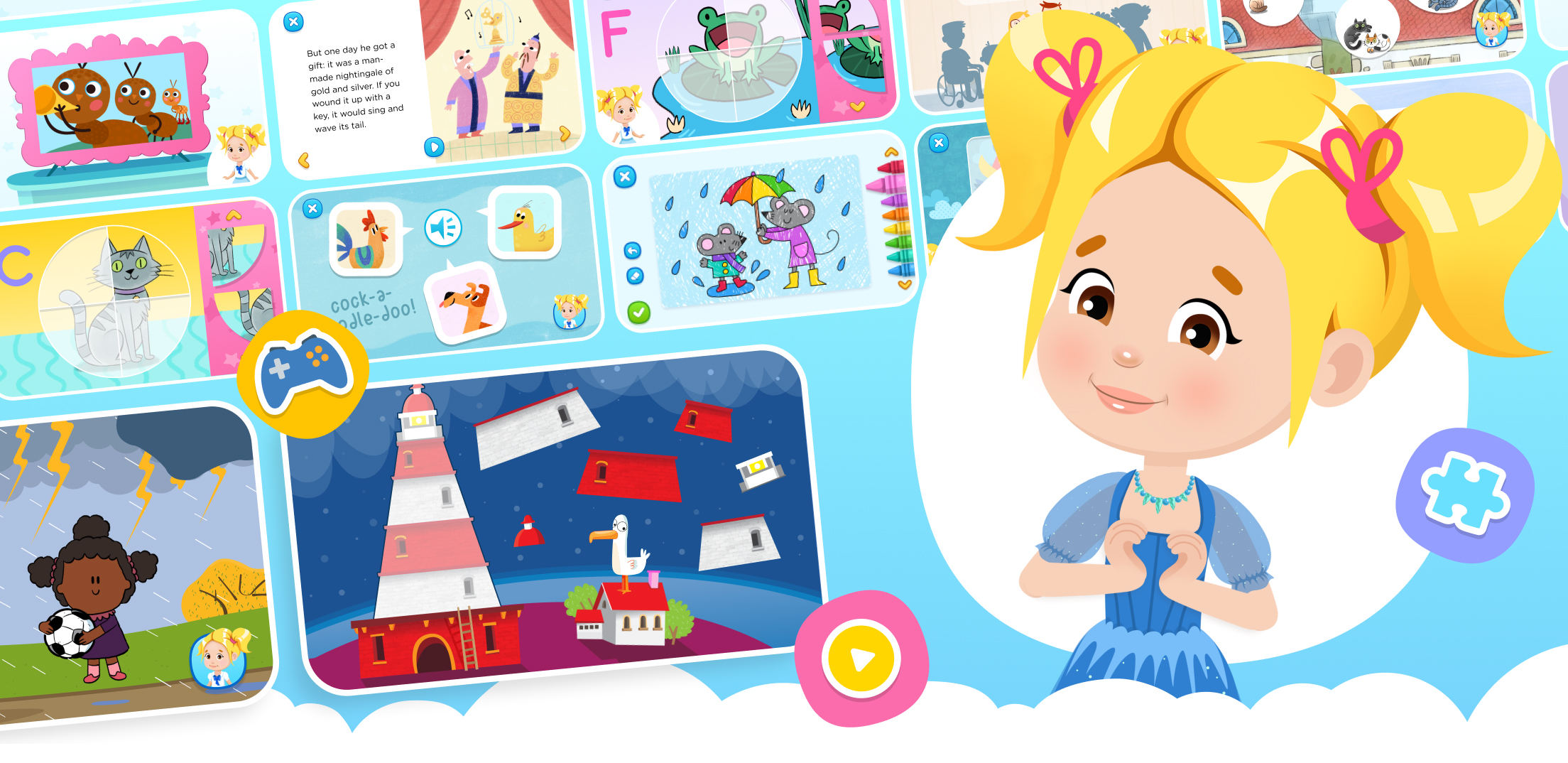Animal identification Reading Comprehension Worksheets for Ages 4-9
4 filtered results
-
From - To
Explore our engaging Animal Identification Reading Comprehension Worksheets designed for children aged 4 to 9! These worksheets provide a fun way for young learners to improve their reading skills while discovering fascinating facts about animals. Each worksheet features vibrant illustrations and simple texts that capture attention and enhance understanding. Children will practice identifying animals, reading for main ideas, and answering comprehension questions, fostering their critical thinking and literacy abilities. Perfect for classrooms or home learning, our resources promote creativity and curiosity about the animal kingdom. Help your child become a confident reader while enjoying the wonders of animals!


Skunks Worksheet


Baby Pandas Worksheet


What Am I? Worksheet


Mountain Animals Worksheet
Animal identification reading comprehension is essential for children aged 4-9 as it lays the foundation for several crucial educational and emotional skills. Learning to identify animals through reading not only enhances vocabulary and comprehension but also builds an understanding of the natural world, fostering curiosity and a lifelong love for learning.
Engaging with texts about animals helps children develop critical thinking and observational skills, as they learn to classify and categorize different species. This practice supports cognitive development and encourages connections between concepts, paving the way for science literacy in later grades.
Moreover, reading about animals can nurture empathy and compassion in young learners. Understanding animal behaviors and habitats enhances emotional intelligence, teaching children to respect all living creatures and promoting environmental stewardship.
By supporting animal identification reading comprehension, parents and teachers are investing in a child's holistic growth. It equips them with important life skills such as active listening, critical analysis, and creativity, while also providing a canvas for discussions about diversity and coexistence. Ultimately, fostering these skills early on can inspire young learners to become thoughtful individuals who appreciate the world around them.
 Assign to My Students
Assign to My Students

















